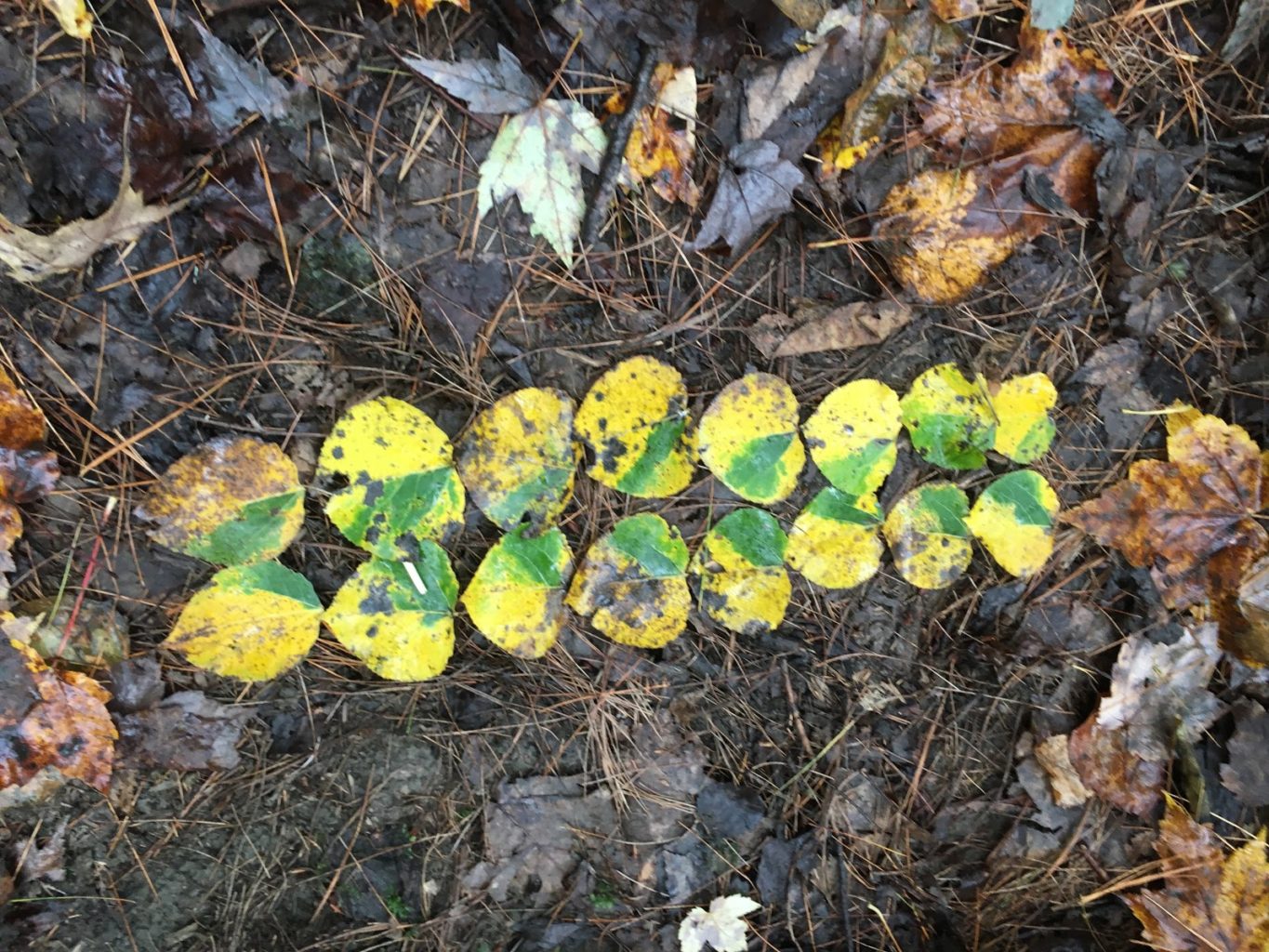Lessons from a Left-handed Leaf

By Zac Cota
It was the soggy sort of autumn day that we adults sometimes call “gloomy,” but the first graders at Union Elementary were completely undeterred. After studying the work of Andy Goldsworthy, famous for his ephemeral nature art, we set out to make some art of our own. Arriving in the woods, pairs of students got right to work. Some arranged branches in various shapes, while others made wheels of color from rusty maple leaves.
While creating a leaf river, a pair of students discovered a pattern emerging in the poplar leaves. Many leaves were bright yellow except for a remaining streak of green on each leaf’s left or right side. This discovery offered an introduction to an essential principle of natural science that students will return to again and again. When arranged in two parallel lines, green streaks to the inside, the leaves formed mirror images. This is known as chirality: the principle of handedness. Two identical, yet non-superimposable structures that are simultaneously the same and not the same. We thought about other mirrored sets in nature, and reflected on our very own special chiral pair: our hands. This sparked a frenzied quest among all the students to find matching pairs of poplar leaves.
Chirality plays a role in everything from architecture to ecology to pharmacology. Evolutionary biologists are exploring why some snail shells spin clockwise (left-handed) and others spin counterclockwise (right-handed). Many synthetic chemicals are wonderfully medicinal in their left-handed form, but the mirrored right-handed forms are highly toxic. And the very evolution of beauty in the animal kingdom can be partly explained by chirality in the reproductive organs of ducks.
ECO experiences offer students far more than outdoor playtime. Guided by NBNC teacher/naturalists, young children discover fundamental truths about the world and themselves by exploring nature’s lessons with their peers and teachers. Every tree contains insight into physics, math, and art. Every branch becomes a study in kindness and relationships. And a decade from now, when building molecules in a chemistry lab or staircases in a design class, these students will remember discovering chirality in a pile of autumn leaves.

